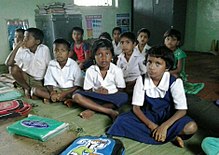
Maharashtra is a state in the western peninsular region of India occupying a substantial portion of the Deccan Plateau. It is bordered by the Arabian Sea to the west, the Indian states of Karnataka and Goa to the south, Telangana to the southeast and Chhattisgarh to the east, Gujarat and Madhya Pradesh to the north, and the Indian union territory of Dadra and Nagar Haveli and Daman and Diu to the northwest. Maharashtra is the second-most populous state in India.
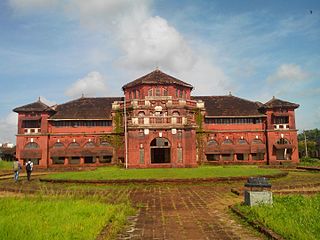
Ratnagiri is a port city on the Arabian Sea coast in Ratnagiri District in southwestern Maharashtra, India. The district is part of Konkan division of Maharashtra. The city is known for the Hapus or Alphonso mangoes. Ratnagiri is the birthplace of Indian independence activist Lokmanya Tilak. Thibaw, the last king of Burma, alongside his consort Supayalat and two infant daughters were exiled to a two-storied brick mansion in Ratnagiri. The building is now known as Thibaw Palace. This place has many villages like Karla, Rajiwada, Mirkarwada, etc.

Savitribai Phule Pune University (SPPU), formerly the University of Pune, is a public state university located in the city of Pune, India. It was established in 1949, and is spread over a 411 acres (1.66 km2) campus in the neighbourhood of Ganeshkhind. The university houses 46 academic departments. It has about 307 recognised research institutes and 612 affiliated colleges offering graduate and under-graduate courses. Savitribai Phule Pune University Ranked 12th NIRF Ranking in 2022.
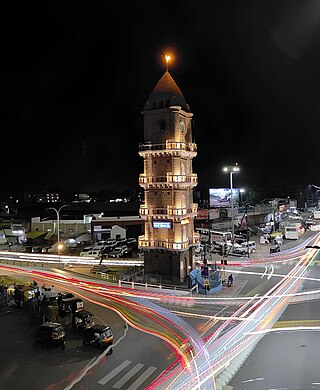
Akola is a major city in the Vidarbha region of the Indian state of Maharashtra. The third largest city in Eastern Maharashtra after Nagpur and Amravati, it is located about 580 kilometres (360 mi) east of the state capital, Mumbai, and 250 kilometres (160 mi) west of the second capital, Nagpur. Akola is the administrative headquarters of the Akola district located in the Amravati division.
Baramati ([baːɾamət̪iː]) is a city, a tehsil and a municipal council in Pune district in the state of Maharashtra, India. The city is about 100 km southeast of the city of Pune and about 250 km from Mumbai.

Pune district is a district in Western Maharashtra with Administrative Headquarters in Pune city. Pune district is the most populous district in the Indian state of Maharashtra. It is one of the most industrialised districts in India.

Osmanabad, officially known as Dharashiv, is a city and a municipal council in Osmanabad district in the Indian state of Maharashtra. The city is the administrative headquarter of Osmanabad district. It is the seventh largest city in Marathwada, and the 39th largest city in Maharashtra by population.

Parbhani is a city in Maharashtra state of India. It is the administrative headquarters of Parbhani District. Parbhani is one of the largest cities in Marathwada region. Parbhani is around 200 kilometres (120 mi) away from regional headquarters of Aurangabad while it is 491 km (305 mi) away from the state capital Mumbai.
Bharati Vidyapeeth College of Engineering (BVCoE) is a private engineering college in Kharghar, Navi Mumbai, India, established in the year 1990. The campus is located in CBD Belapur and is founded by the Bharati Vidyapeeth group. The college is permanently affiliated to University Of Mumbai and approved by All India Council for Technical Education (AICTE), New Delhi. UG courses are currently NBA accredited.
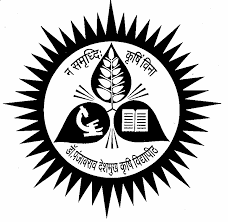
Dr. Panjabrao Deshmukh Krishi Vidyapeeth is an agricultural university located at Akola, in Maharashtra, India, in the Vidarbha region. The university is entrusted with the responsibility of agricultural education, research and extension education along with breeder and foundation seed programmes.

Vasantrao Naik Marathwada Krishi Vidyapeeth (VNMKV), formerly Marathwada Krishi Vidyapeeth (MKV), is an agricultural university at Parbhani in the Indian state of Maharashtra.

The economy of the state of Maharashtra is the largest in India. Maharashtra is India's second most industrialised state contributing 20% of national industrial output. Almost 46% of the GSDP is contributed by industry. Maharashtra has software parks in many cities around the state, and is the second largest exporter of software with annual exports over ₹ 80,000 crores.

Latur is a city in the Indian state of Maharashtra, and is one of the largest cities of the Marathwada region. It is the administrative headquarters of Latur district and Latur Taluka. The city is a tourist hub surrounded by many historical monuments, including Udgir Fort and Kharosa Caves. The people in Latur are called Laturkar. The most spoken language in Latur is Marathi. The city's quality of education attracts students from all over Maharashtra. It is a drought prone area with acute water shortage in its city and rural areas. The economy is agriculture intensive, but in recent years is also dependent on Educational sector and its allied activities. Industrial development is minimal in the district. Latur is 43 kilometers from the epicenter of the devastating 1993 Latur earthquake.
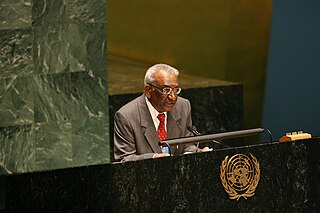
Dr. Janardan Madhavrao Waghmare is an Indian politician and educationist. He has served as a Member of Parliament in the Rajya Sabha from Maharashtra. He was also the President of the Latur Municipal Council.
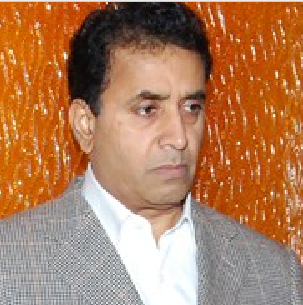
Anil Vasantrao Deshmukh is an Indian politician from the state of Maharashtra. He is a senior leader of the Nationalist Congress Party. Deshmukh served as the Minister for Home Affairs in Government of Maharashtra between 2019 and 2021. Deshmukh resigned in 2021 as the Home Minister of Maharashtra due to allegations of money laundering and other charges by Param Bir Singh. He was arrested by ED and was kept in custody for 1 year before being released by a court order.
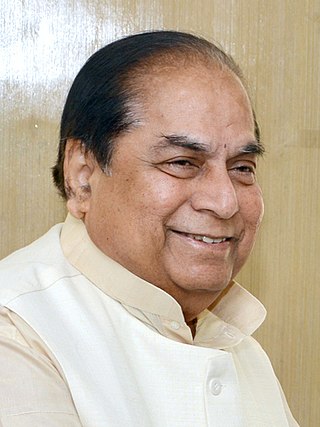
Dnyandeo Yashwantrao Patil is a former Indian politician, best known as the governor of Bihar, West Bengal and Tripura. He was a leader of the Indian National Congress from Maharashtra state.
Atmaram Bhairav Joshi was an Indian agricultural scientist and academic, known for his contributions to the field of wheat and other crop breeding. He was the vice-chancellor of Mahatma Phule Krishi Viswavidyalaya, Rahuri and the chairman of the Research Advisory Committee of the Indian Agricultural Research Institute, New Delhi. The Government of India awarded him the fourth highest Indian civilian award of Padma Shri in 1975.

The College of Agriculture, Pune is a college for studies and research in the field of Agriculture situated in Pune, India. It is constituent college of Mahatma Phule Krishi Vidyapeeth.
